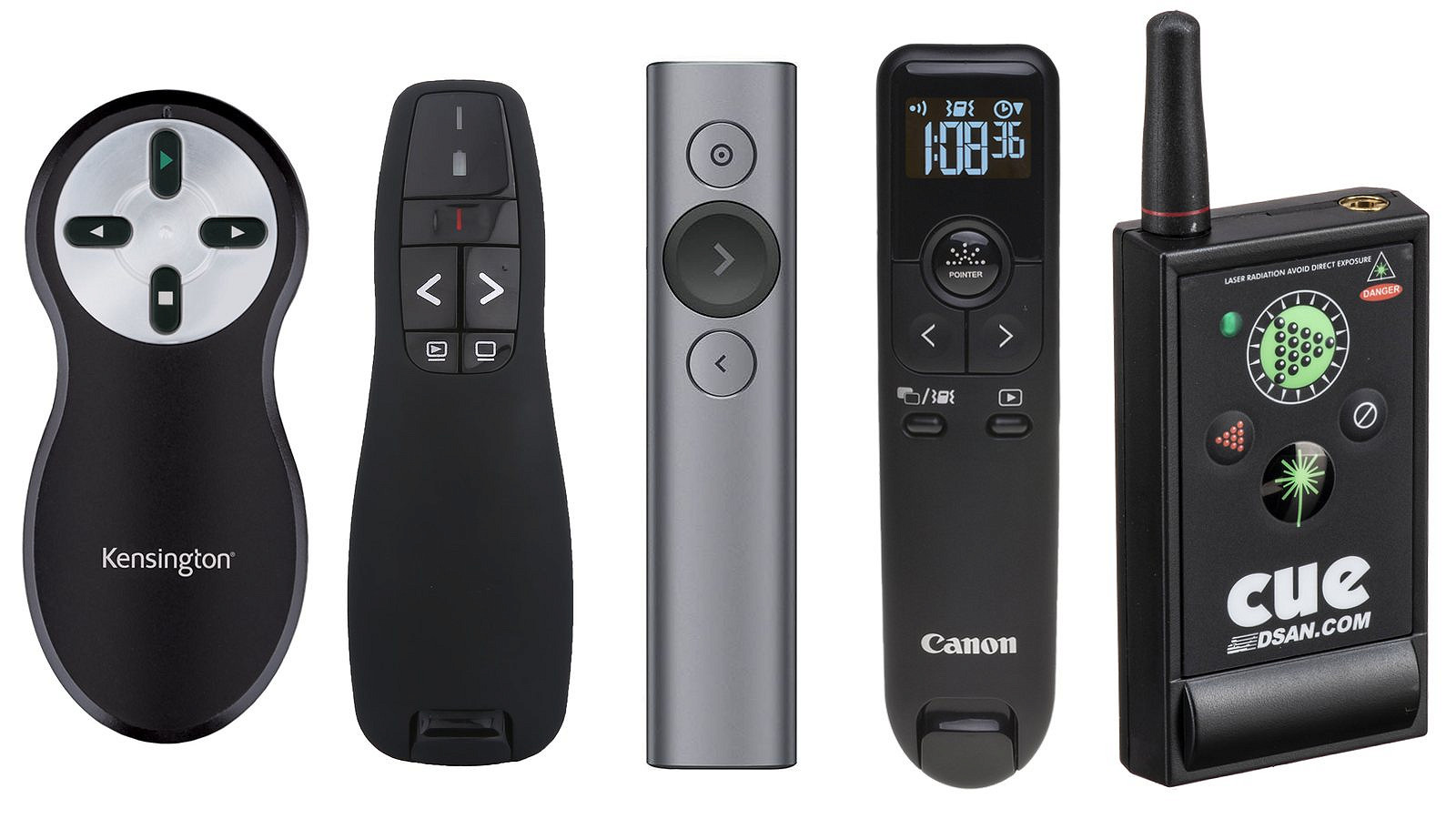Carry a Clicker
Use of a clicker to advance your slides is a really fundamental part of smoothing over the mechanics of a presentation.
Whether a presenter remote, or clicker, is provided by the presenter or by the event is sometimes a source of confusion. We’re talking the very lightest sort of not-that-big-a-deal confusion here, but you know, some confusion. I’ve seen plenty of A/V setups that provide either a basic or some sort of specialist remote just as often as I’ve seen no remote provided at all.
I think you should always carry your own as part of your talk toolkit, and I hope to set out a reasonable argument for why that is. But first, let’s be sure what we’re talking about here.

Presenter remotes come in a few different shapes and sizes, from the most basic to the really quite fancy. They provide buttons to control your presentation – mainly forward and back as a minimum – and the complexity steps up from there. Generally most will have two parts, the main body that you hold discretely in your hand on stage, and a small USB dongle that connects to your laptop to receive the signals.
Many have built-in laser pointer functionality which can useful for pointing out detail on complex slides, and some include timers that will subtly vibrate in your hand when you’re approaching the end of your allotted time.
As mentioned, most communicate over a range of about 20 meters to your computer using a radio signal to a USB receiver, much like a standard cordless mouse. More modern models use Bluetooth to do the same without the dongle, and theatre and TV-grade systems used on big stages use more heavy duty radio connections to dedicated receiver boxes. That’s the sort of system you might have seen presenters like Steve Jobs use during a big keynote.
Use of a clicker to advance your slides is a really fundamental part of smoothing over the mechanics of a presentation to help the audience focus on what you’re saying and not what you’re doing. A well rehearsed presenter will keep your attention as the slides progress without the audience even noticing - much like a slick TV weather presenter would.
Why carry your own?
The primary reason to carry your own remote is so that you can be sure of having a basic standard set of equipment. In the worst case scenario where nothing is provided, then no problem, you have your own. You don’t need to perform a distracting little gallop back to your computer each time you need to advance a slide, nor do you need to fumble for the correct key on the keyboard to press. You have everything you need in your hand.
Sometimes an event will provide their own standard clicker, but it might not be one that is familiar to you. If the goal is to move seamlessly from one slide to the next, it’s best not to have to pause to look down at your remote. Switch it out for your own and you’ll have no such problem.
As mentioned, many remotes have additional features built in. If you think you might like to make use of a laser pointer, or like the sound of a built-in countdown timer, then having your own remote with those features is a great idea.
We’ve talked about rehearsing your presentation out loud in front of your hotel room mirror. If you have your own personal remote then you can use that when you rehearse, adding to the comfort level when it comes to doing the presentation for real.
There are basically no downsides to having your own presenter remote to hand (pun totally intended), and only potential upsides. There is one important thing to keep in mind though…
You can’t always use your own
Some events with more complex A/V setups might require you to use their remote rather than your own. We saw an example of the more industrial style radio remotes used in big venues, and those tend to be used in situations with massive stages, redundant computer systems, and lots of radio devises using the airwaves. These heavy-duty systems tend to have no frills, but will keep working reliably in a war zone.
Fun side note: those sorts of systems have a dedicated receiver box which can output over USB to more than one computer. For big important events, you can set two (or more!) computers up to run your presentation. Each time you navigate forward or back using the remote, the command is relayed to the multiple computers so they’re kept in sync. If one machine crashes, the A/V crew can switch the projector to use one of the others and the audience may not even notice. Pretty fancy, right?
When it comes to situations like that, you’re going to have a relinquish control of your own remote and just go with the flow. It’s worth keeping in mind when it comes to relying on features like built-in timers, and it’s worth always having a backup plan for those scenarios.
Advent speaker tips: this is part of a series of tips for public speakers that we’re posting throughout advent. Check back daily during December for more.